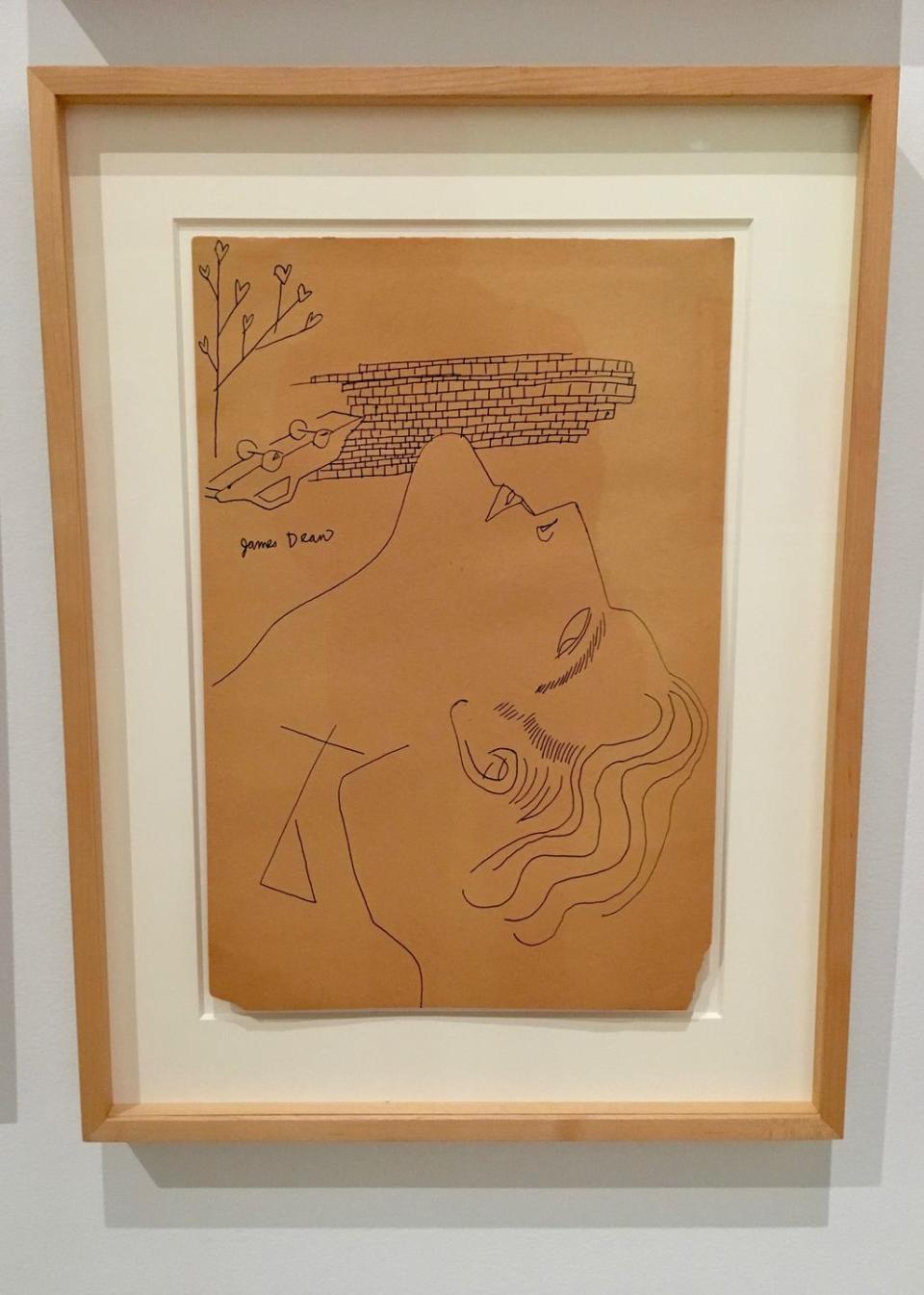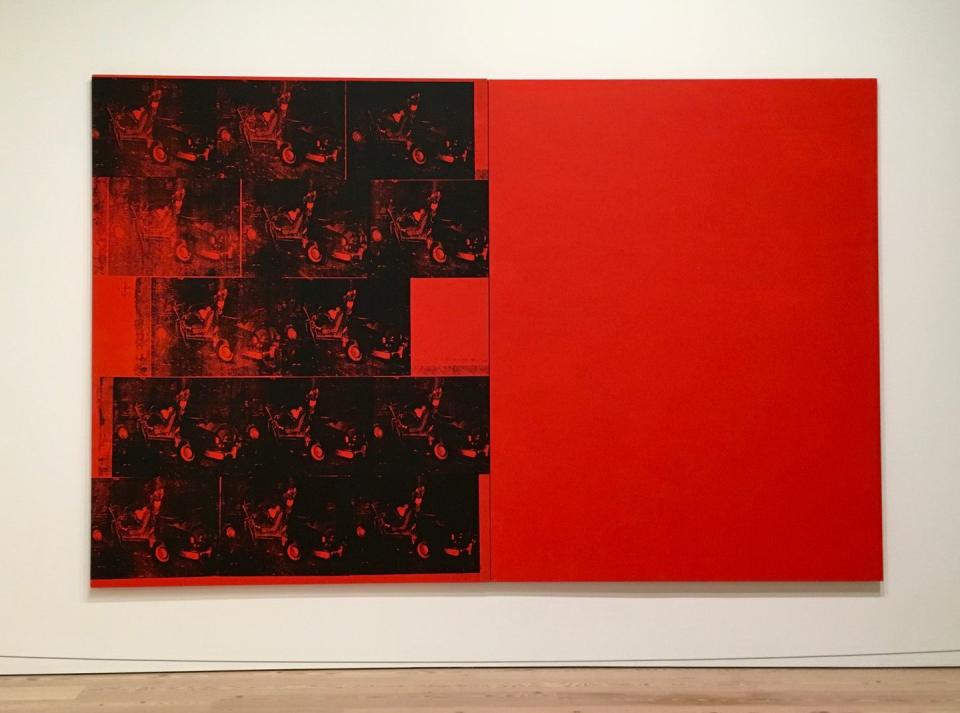Andy Warhol Didn't Drive, but He Was Obsessed with Cars

Famed pop artist Andy Warhol lived in New York City for nearly all of his adult life. Like most New Yorkers, he didn't drive. But as a new retrospective exhibit at the Whitney Museum in Manhattan, opening on November 12, demonstrates, he was obsessed with the automobile.
"If you look at the catalogue raisonné," says Whitney curatorial research associate Mark Loiacono, referring to a comprehensive listing of an artist's work, "one of the first things he paints is cars."

Loiacono cites a very early drawing of James Dean with an overturned car in the background, and an early commercial work called Dead Stop that also shows a car accident. Warhol got his start as an illustrator, and he littered his early work with automotive images. "Cars were, early on, part of the vernacular of his work, and of the advertising culture in general," Loiacono says.
Shortly after these early works, in the early 1960s, Warhol began his Death and Disaster series, in which he would take a newswire photograph of some devastation and reprint it-often serially and imbued with bright color. The object here was to simultaneously underscore and desensitize viewers to the danger inherent in beloved objects. "There's always sort of this subtext of the dark side of car culture in particular, and American culture in general, in terms of consumerism," says Loiacono.

The inevitability of failure, in the mundane or the glamorous, is the reason behind Warhol's Tunafish Disaster, a silkscreen of two cans of tuna and two women who were poisoned to death by tainted examples in the 1960s. It was the reason behind his Suicide (Fallen Body), which depicts a woman who had jumped off the Empire State Building and landed cradled in the hood of a limousine that was idling out front. It was behind his iconic paintings of celebrities like Marilyn Monroe or Elizabeth Taylor, whom he said he wanted to paint, according to Loiacono, because of their fragility, because "he thought they were going to die." And it was even behind his morbid interest in things like holiday traffic reports. "He talks about the influence for the Death and Disaster paintings, saying that, every holiday, while everyone was celebrating, the announcer on the radio would talk about how many people had died in traffic accidents," says Loiacono.
Warhol's interest in the automobile wasn't all darkness. He was one of the first participants in the famed BMW Art Car program, painting directly, and buoyantly, on an M1 in 1979.
In 1986, his final works were commissioned by Mercedes-Benz to celebrate the company's, and the automobile's, centennial. He'd made significant progress but had not yet finished the work-simply entitled Cars and meant to include 80 pieces featuring 20 Mercedes models-when he died in February 1987. He completed 35 pictures and 12 large-format drawings representing eight models, including colorful silkscreens of the Mercedes-Benz 300SL Gullwing, C111 experimental coupe, 196 R Streamliner racer, the original 1886 Benz Patent-Motorwagen, and the Daimler Motorkutsche from the same year.

And, though he didn't have a license to drive, Warhol even owned a car of his own, one that was suitably stylish, compelling, and prone to decay.
"In 1974 he bought a Rolls-Royce Silver Shadow," says Loiacono. "He owned it until he died. It was brown." More precisely, it was Walnut over black two-tone. He was always a passenger in the car, which was, reportedly, sometimes driven by people in his circle of celebrity friends, including Liza Minnelli, Truman Capote, and Imelda Marcos.
The Whitney Museum exhibit Andy Warhol-From A to B and Back Again runs through March 31, 2019.
('You Might Also Like',)

 Yahoo Autos
Yahoo Autos 